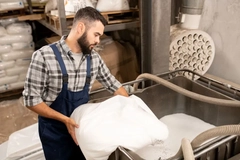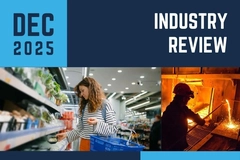PreZero provides businesses with waste assessment tool to navigate data shortages and regulatory requirements
Packaging companies are balancing sustainability and limited data on design and waste management. PreZero’s waste assessment tool can assist providers “future-proof” their packaging by identifying recycling parameters amid challenging regulatory guidelines, according to Alexander Reitz, head of Consulting and Development at PreZero International.
PreZero is a Germany-based waste management service whose Sustainable Packaging Optimization Tool (SPOT) helps companies analyze and improve their packaging’s environmental credentials.
Packaging Insights interviews Reitz to learn more about how the tool can create customized assessments and fill in companies’ data gaps for recyclability, materials, design, and waste collection.
What are trends in packaging waste assessment tools?
Reitz: We are currently observing that digital tools that simplify and enhance the packaging value chain are gaining increasing importance. New legislation like the EU Packaging and Packaging Waste Regulation (PPWR) elevates the role of packaging to a completely new level in many companies, especially for brand users and retailers.
At the same time, complexity is steadily growing. As a result, it becomes difficult for companies to maintain an overview of all relevant requirements, data, and processes.
How does SPOT help manufacturers increase recyclability?
 SPOT helps users make decisions that promote sustainable and cost-effective packaging processes (Image credit: PreZero).Reitz: PreZero SPOT is a free digital platform for comprehensive packaging optimization. It helps companies analyze and improve their packaging for sustainability. The tool goes far beyond recyclability and considers other ecological and economic factors.
SPOT helps users make decisions that promote sustainable and cost-effective packaging processes (Image credit: PreZero).Reitz: PreZero SPOT is a free digital platform for comprehensive packaging optimization. It helps companies analyze and improve their packaging for sustainability. The tool goes far beyond recyclability and considers other ecological and economic factors.
With SPOT, packaging manufacturers can make informed decisions to make their packaging portfolio more efficient and environmentally friendly, which brings long-term ecological and economic benefits.
What information does the SPOT tool provide packaging manufacturers?
Reitz: It allows users to determine the most relevant parameters necessary to make their packaging future-proof: recyclability, carbon footprint, additional environmental impact categories, and packaging costs such as EPR fees or plastic taxes.
They can easily compare different options and create customized reports on the performance of their whole packaging portfolio. Additionally, the tool helps users make strategic decisions that promote sustainable and cost-effective development of their packaging processes.
What challenges do packaging manufacturers face when aiming for more sustainability?
Reitz: One of the main difficulties for packaging manufacturers is navigating the complexity of sustainability requirements while also dealing with limited data availability. The amount of specific information needed to conduct reliable recyclability assessments is immense because the underlying guidelines are complex.
Often, companies don’t have all the necessary information and must first collect it from their suppliers and other value chain partners. This is exactly where PreZero SPOT comes in — with effective collaboration and data-sharing capabilities. It makes it significantly easier to create transparency in complex packaging structures and to implement well-founded optimizations.
What factors does SPOT consider when assessing the recyclability of packaging across the EU?
 SPOT considers country-specific recycling infrastructure in analysis.
SPOT considers country-specific recycling infrastructure in analysis.
Reitz: PreZero SPOT is based on the standards of the Circular Packaging Design Guidelines of the Fachhochschule Campus in Vienna, Austria, the World Packaging Organization’s “Packaging Design for Recycling Guidelines,” and the Efficient Consumer Response community — an NGO that tackles packaging problems such as on-shelf availability, shrink, and food waste.
The analysis considers country-specific infrastructure for sorting and recycling and other particularities. The calculation of life cycle assessments is based on the International Organization for Standardization norm 14044 and data from EcoInvent and has been critically reviewed by Fraunhofer Institute for Environmental, Safety and Energy Technology in Oberhausen, Germany.
How does PreZero plan to use the SPOT tool in the future?
Reitz: PreZero SPOT is offered in cooperation with Packaging Cockpit from Vienna, Austria. We plan to develop the platform further to include a full-scale assessment of PPWR readiness.
In the future, companies will need to monitor many more parameters, such as packaging minimization. SPOT will offer all of those. The goal is to support companies in complying with regulatory requirements early and provide them with practical guidance for sustainable packaging strategies.











